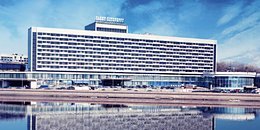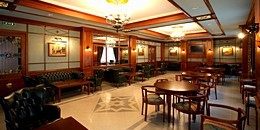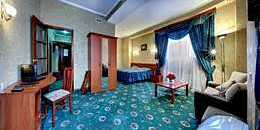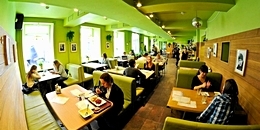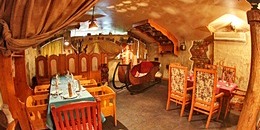Bolshoy Sampsonievsky Prospekt
This avenue is located in the northern part of the city in the Vyborgsky District. It was originally part of the highway to Vyborg, located 174 km from St Petersburg. The avenue got its name in 1709 when the original, wooden St. Sampson Cathedral was built, among the very first churches in St. Petersburg. In the 1730s, the cathedral was rebuilt in stone presumably under the supervision of architect Domenico Trezzini. The beautiful azure and white cathedral has since then remained virtually unaltered. Opposite the church today is a monument to Peter I, the founder of St. Petersburg and commissioner of the original cathedral.
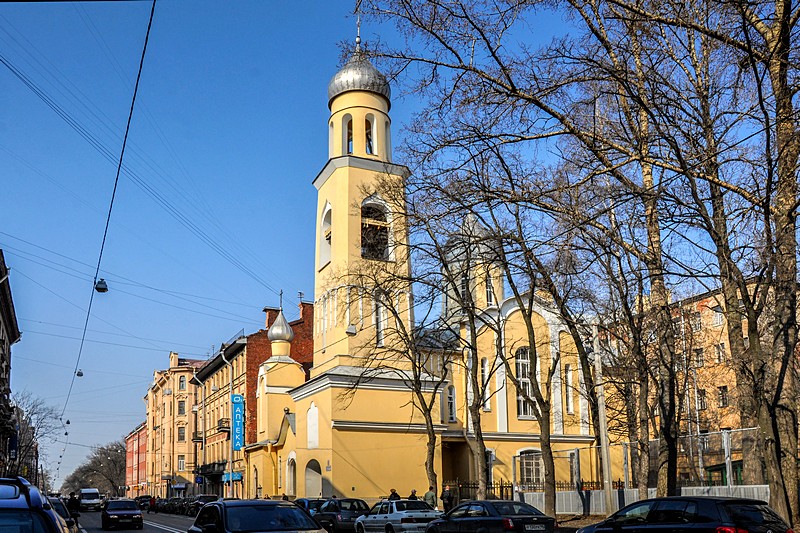
In the 19th century, the avenue was built up with residential and office buildings. Barracks, hospitals, and factories also rose along the avenue during this time. A vast area of several blocks, from the banks of the Neva River to Ulitsa Komissara Smirnova is taken up with the Military Medical Academy - Russia's first institution of higher education for military physicians. At different times, dozens of prominent doctors, including James Villa, Sergei Botkin, Vladimir Bekhterev, Ivan Pavlov, Nikolay Pirogov, and Ivan Sechenov, worked here. In front of the Academy are monuments to Botkin and Villa as well as a statue of Hygieia - the goddess of health.
In the 1830s, in the area between Ulitsa Tobolskaya and Ulitsa Litovskaya, the Moscow Guards regiment was garrisoned. The red buildings of the barracks were designed by two eminent classical architects, Alexander Shtaubert and Vikentiy Beretti. In 1901-1903, the regimental Church of St Michael the Archangel was built, but this tall church in the Russian Revival style was demolished in the 1930s. Another church built here during that time, the St. Anna Kashinskaya Church, had a better fate and can still be seen today.
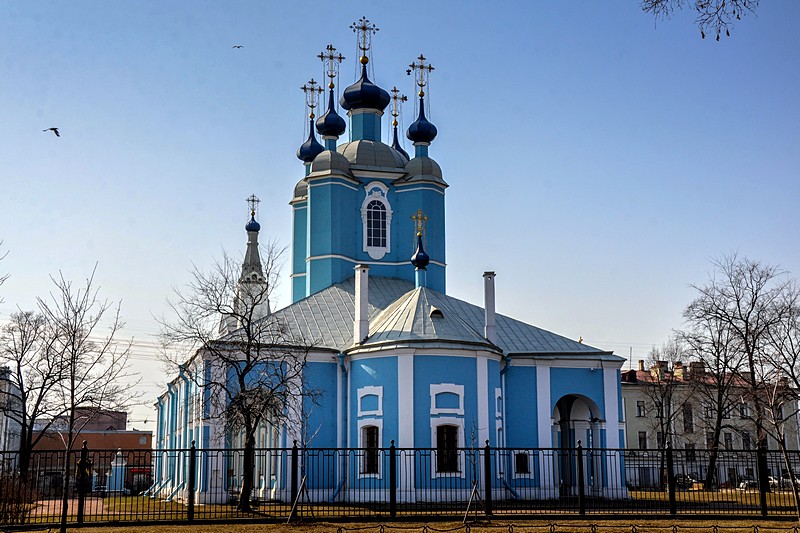
Factories, however, were what dominated most of Bolshoy Sampsonievsky Prospekt. The first was the Sampson Cotton-Spinning Factory, built in 1837. It has not survived, unlike the production and residential buildings of the Ludwig Nobel plant (No. 30). This plant belonged to the famous Nobel dynasty of Swedish entrepreneurs and plant produced steam engines and boilers, gas and kerosene engines, pumps, steel shells and mines. Subsequently, as the Russian Diesel Plant, it became one of the largest heavy engineering industries in the city. Other businesses include the New Lessner Mechanical Plant (No. 66), the Ericcson and Co. telephone factory (No. 60), and the Carr Sugar Mill (No. 24). All of these factories were later nationalized in the Soviet era. The Ericcson factory in particular is a fine example of turn-of-the-century industrial architecture.
In the late 1920s, a group of architects and town planners built a few notable buildings in the constructivist style on the avenue, among them a true masterpiece of the era, the Vyborg Factory Kitchen (No. 45), which was designed as a new way to feed the burgeoning urban workforce, many of whom had none but the most basic cooking facilities in their lodgings. The Volkhov Hydroelectric Power Plant substation (No. 16) is a more modest example of the style. By the beginning of the 1950s, several monumental Stalinist apartment buildings (No. 76, 79 and 108) began to appear in the area.
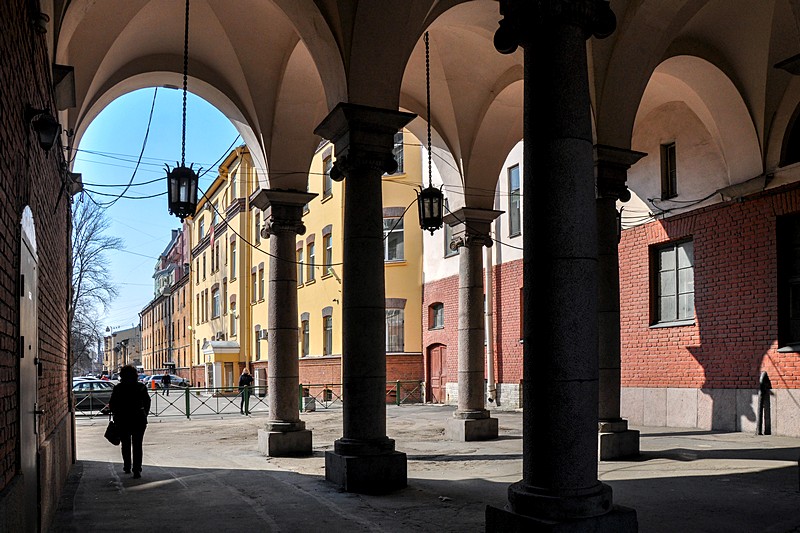
At the beginning of the avenue, next to the Neva River, two more modern buildings have done nothing for the area's aesthetic standards. Construction of the monolithic concrete block of the Saint Petersburg Hotel in the 1960s entailed the demolition of the Pirogov Medical Museum, a rather beautiful Russian Neoclassical structure by Victor Schroter. Unappealing as the hotel is architecturally, however, it did at least conform to St. Petersburg's strict planning codes for building height in the historic centre. The same cannot be said for the soaring Mont Blanc apartment building (Nos. 4-8), which took the place of three typically elegant turn-of-the-century apartment buildings and is considered one of the most egregious examples of the wide-scale flouting of building and planning regulations by developers over the last two decades.
In Soviet times, the thoroughfare was renamed Karl Marx Prospekt. Three monuments were unveiled along the avenue to Russian heroes of the Second World War: Theodosia Smolyachkovo, who used 126 rounds of sniper rifle to kill 125 Nazis; Alexander Matrosov, who blocked the embrasure of a German bunker with his chest so his unit could advance; and, more controversially, Alexander Marinesko, the captain of the Soviet submarine S-13, which torpedoed the German ship MV Wilhelm Gustloff. The latter was a converted cruise ship being employed to evacuate military personnel and civilians from Poland when it was sunk in January 1945, with the loss of over 9 000 lives.
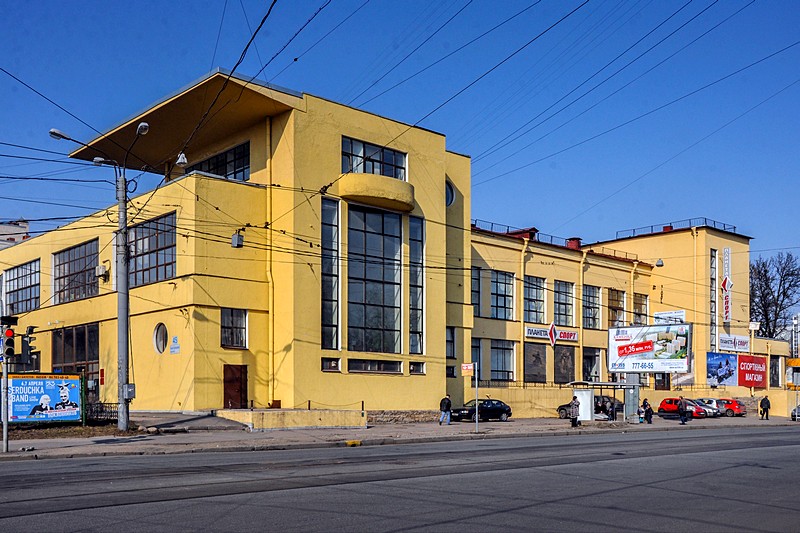
For those visitors who have the time to explore Bolshoy Sampsonievsky Prospekt and the surrounding area, it is advisable to visit the nearby parks as well: Sampsonievsky Garden, the Forest-Technical Academy Park and the garden at the Military Medical Academy.
| Metro stations: | Ploshchad Lenina, Vyborgskaya, Lesnaya |
|---|---|
| Directions: | Exit Ploshchad Lenina Metro Station and turn right then first left onto Botkinskaya Ulitsa. Walk along Botinskaya about 500 m to reach Bolshoy Sampsionevsky Prospekt. |
| Best walking route: | The entire avenue (about 2.5 hours) |
| What's here? | St. Sampson Cathedral, Vyborg Factory Kitchen, Military Medical Academy |
| What's nearby? | Neva River, Finland Station |

